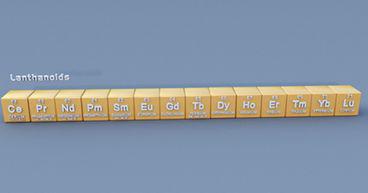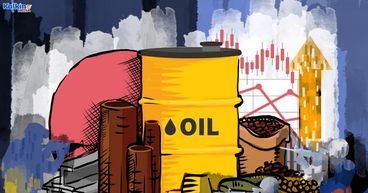Hydrogen
About
| Index | Price | Change |
|---|
Hydrogen, the lightest element in the periodic table, could drive the heaviest vehicles and machines of the future. Although the element is present in a very little amount in the atmosphere, it is present in abundance in compound form substances, especially water. Hydrogen can be combusted to produce heat which, in turn, can be used to propel motors and turbines.
Conventionally, hydrogen is primarily produced from steam reforming of natural gas, electrolysis of water or coal gasification. Due to heavy dependence on fossil fuels for the extraction of hydrogen, hydrogen production project sites are located near fossil fuel downstream facilities. Green and Blue are the two main types of hydrogen depending on the production process used.
Green hydrogen is produced by the breakdown of water molecules into oxygen and hydrogen, using huge commercial-scale electrolysis and is powered by renewable energy sources.
On the other hand, blue hydrogen is produced through Steam Methane Reforming or using Auto Thermal Reforming by breaking natural gas into carbon dioxide and hydrogen. The blue hydrogen production process when coupled with carbon capture and storage (CCS) technologies make the process clean by curbing carbon emission.
The coronavirus pandemic has sparked off a major transformational shift to clean and green energy, shaking the entire fossil fuel industry. Rising investor awareness and government reforms have begun to transform the investment scenario in the energy ecosystem. Hydrogen is anticipated to play a critical role in decarbonising industrial processes and aid towards achieving a carbon-neutral future.
Hydrogen and Decarbonisation
With an eye on becoming carbon neutral, more than 20 countries have announced a ban on sales of internal combustion engines (ICE) before 2035. In the US, California and 15 other states have set the target to distance from ICE vehicles by 2035. On the other hand, Chinese solar manufacturers are betting on electrolysers’ production by ramping up production on expectations that the market will boom and consumers will switch to low-carbon fuels. The Australian government is also working on a unique gigawatt-scale green hydrogen project as it will capture water from the air.
Natural gas-rich nations also hold a significant potential to tap the hydrogen opportunity with the implementation of carbon sequestration technologies to produce low-carbon hydrogen. A conversion to a hydrogen-based economy would offer new economic prospects to countries that entirely rely on fossil fuel exports for the national exchequer.
Presently, both types of hydrogen are serving their purpose successfully but a major chunk of hydrogen across the globe is being produced through fossil fuels. The key barrier to produce low-carbon hydrogen is the production cost. Currently, the production of hydrogen from fossil fuels is the most economical way.
Big Industry players across the power and energy sector have already shared their hydrogen capex plans. With the government and companies of wide-scale collaborating, the use of hydrogen has further expanded. Additionally, for hydrogen to gain traction and applicability, the support of government bodies and the implementation of hydrogen-related policies are of utmost importance.
Frequently Asked Questions
Hydrogen is used in vast quantities for upgrading fossil fuels by hydrocracking, hydrodesulfurisation and hydrodealkylation. Hydrogen is vastly used for hydrogenation to produce ammonia and other chemicals. Ammonia is produced by the Haber-Bosch process and is widely used by the global fertiliser industry.
Hydrogenation is used to convert unsaturated fats into saturated ones, for example – Methanol is produced from the hydrogenation of carbon dioxide. The element is also used to manufacture hydrochloric acid and as a reducing agent for converting ores to metals.
Hydrogen is currently being projected as the energy of the future. The element can be burned in fuel cells to generate electricity.
To bring down the hydrogen production break-even cost, a substantial investment is required to scale up carbon transport and storage, shipping, distribution and retail facilities for hydrogen.
A good initiative implemented by some of the countries, including Morocco, is to conceptualise and develop regional-scale clusters of hydrogen and its end-use application industries supplemented by refining, power generation, fertiliser and steel production facilities.
Furthermore, smaller hydrogen off-takers can also piggyback on the integrated infrastructure and low-cost hydrogen supply to achieve break-even faster. An integrated cluster framework will cut down operational expenses and develop new economic centres.
Currently, the economics of green hydrogen may not be attractive enough to compete against conventional hydrogen and fossil fuels.
Hydrogen provides a promising option to reduce global carbon emissions across sectors dependent on fossil fuels. Some experts believe that there is a strong potential for the hydrogen production cost to fall, but its usage needs to be scaled up to see the best results. The declining cost of green hydrogen production along with other renewable sources could offer a promising route to decarbonise the world effectively and economically.
Green hydrogen is produced from the electrolysis of de-mineralised water. As per scientific journals, water electrolysis would require over 9 kg of water to produce a kilogram of hydrogen, further taking the demineralisation process into account, the water required to produce a kg of hydrogen is in a range of 18-24kgs.
While this might not seem large, the water required for electrolysis to produce green hydrogen may rise substantially to the levels required for municipal and domestic use by 2050. The final amount is dependent on the global choice of green and blue hydrogen. Overall,





